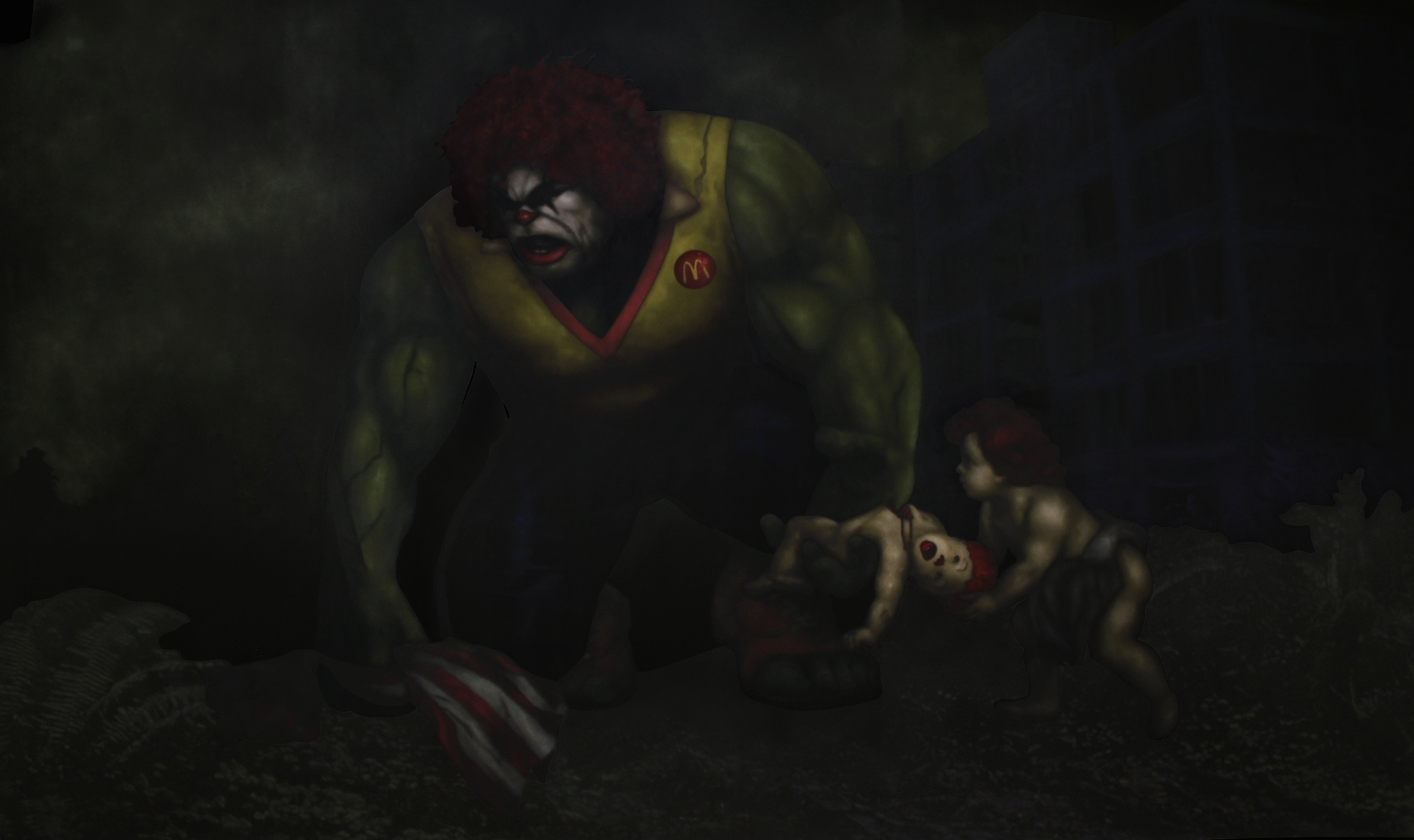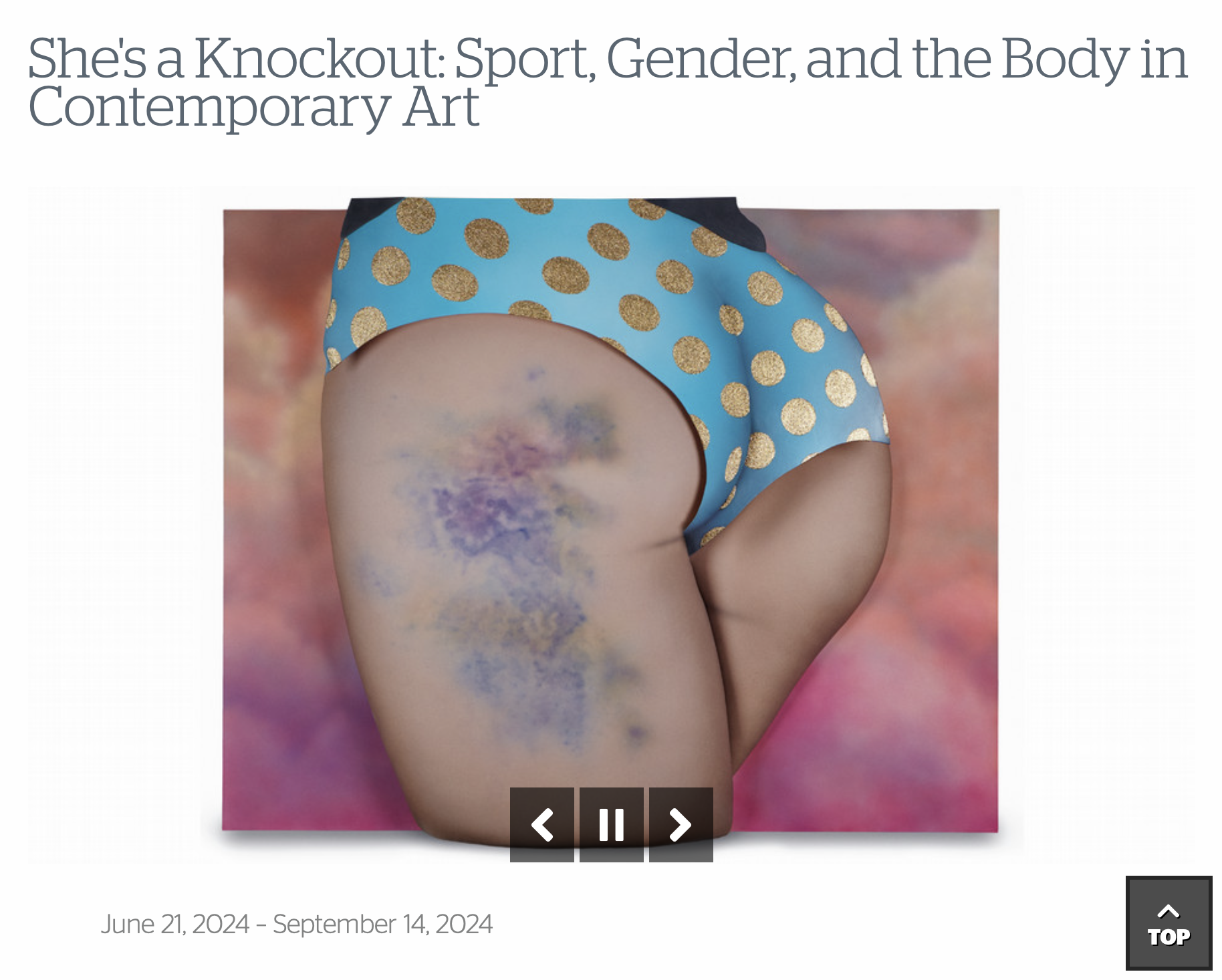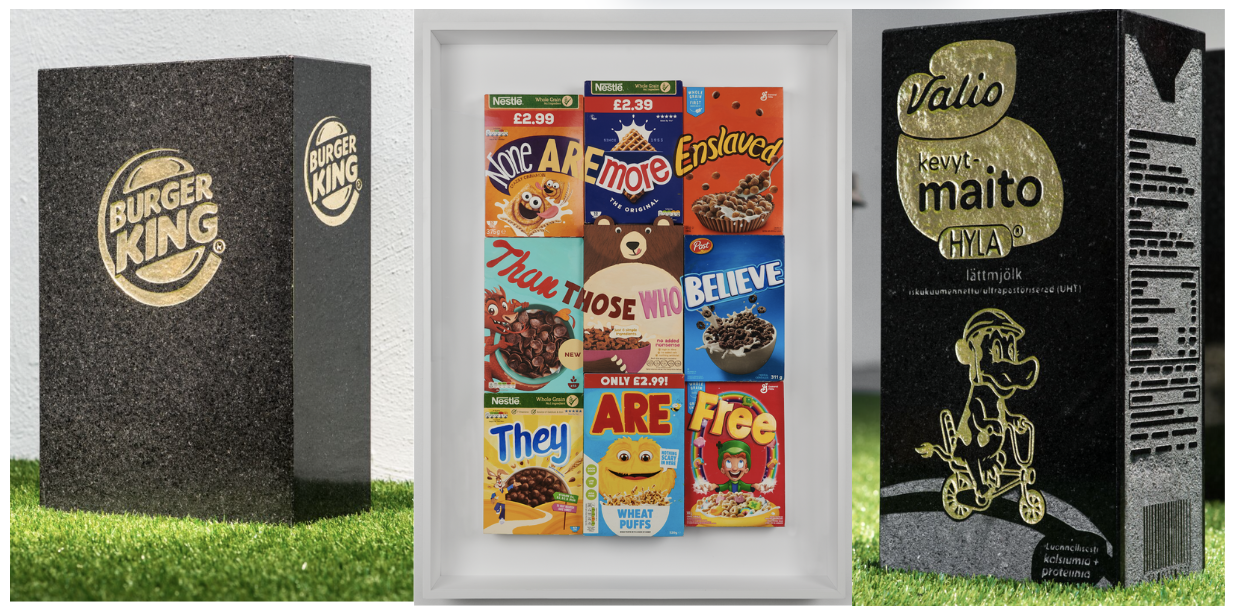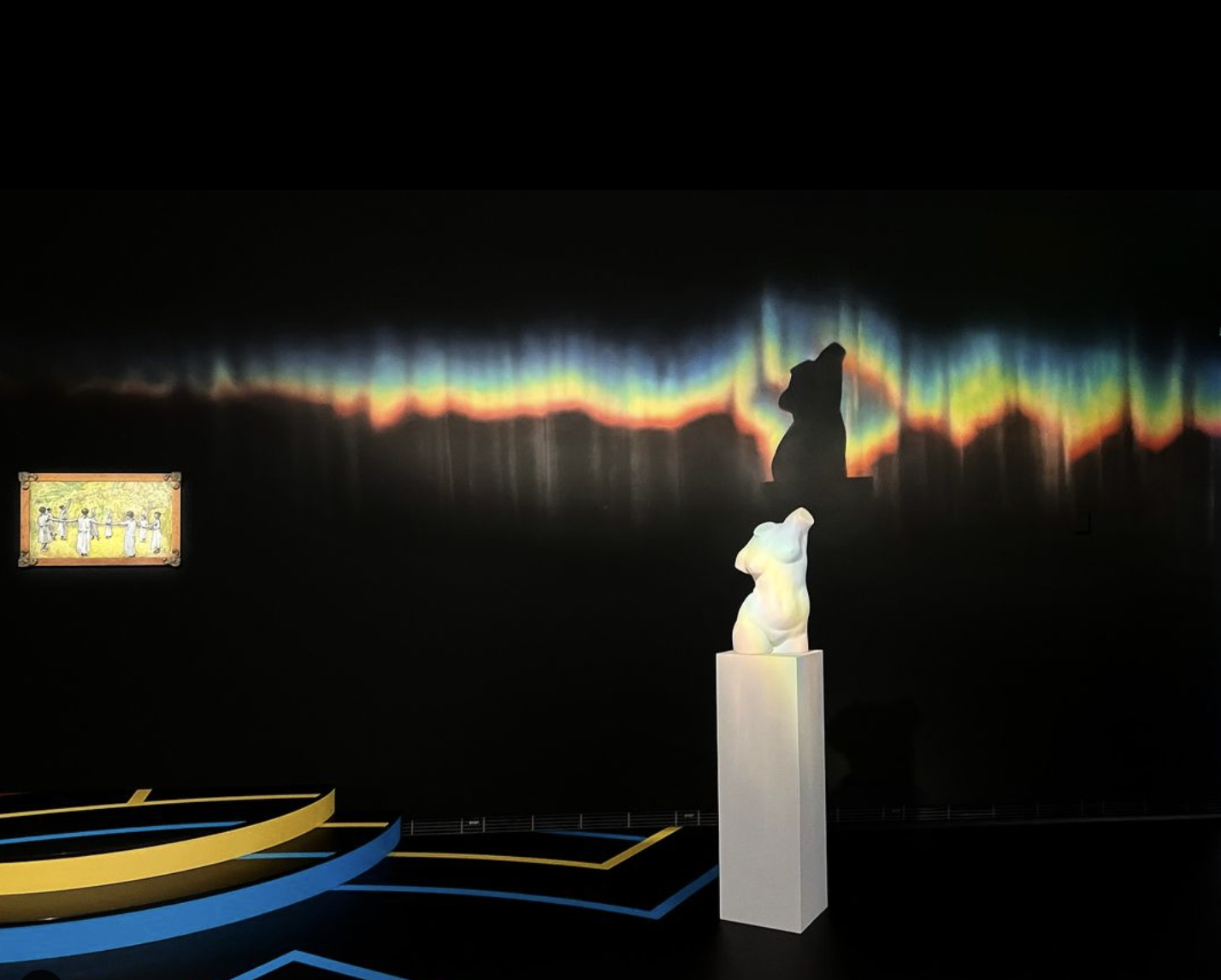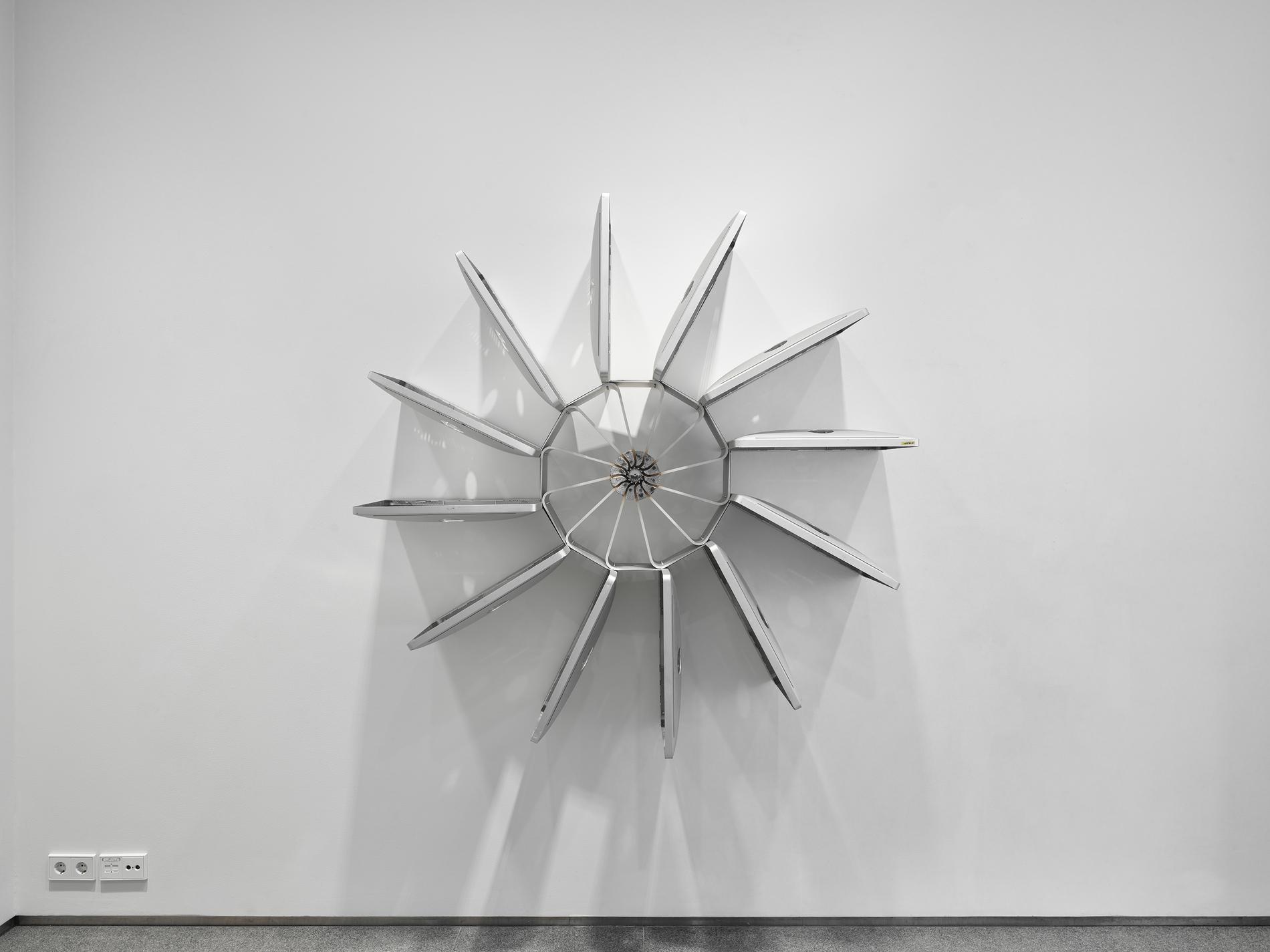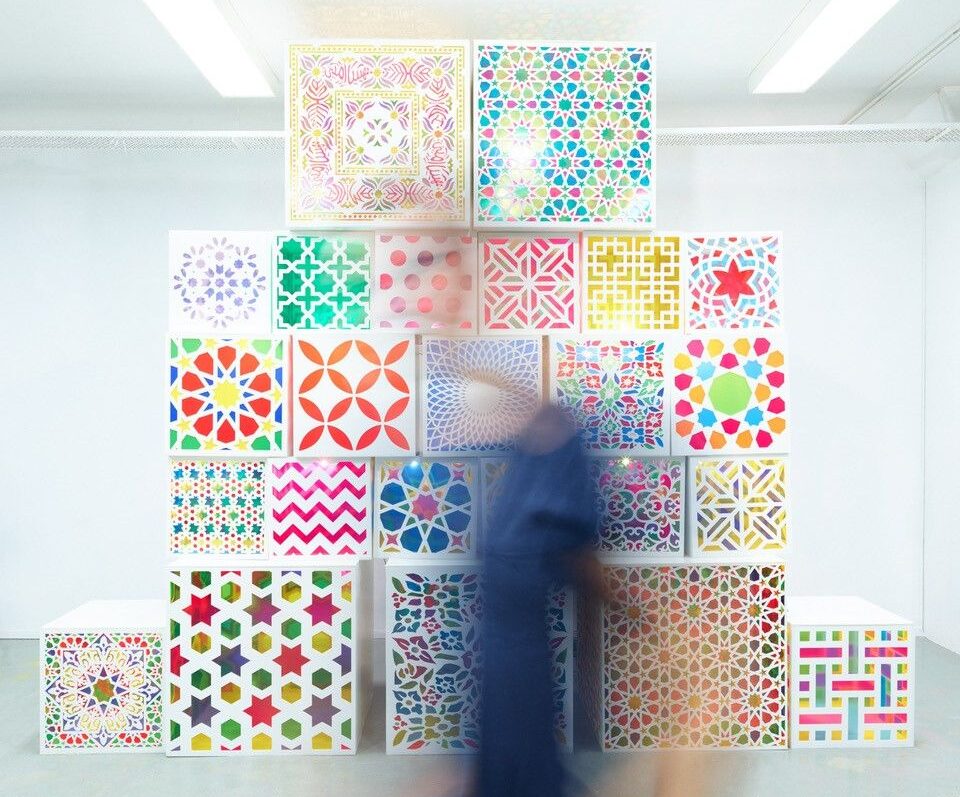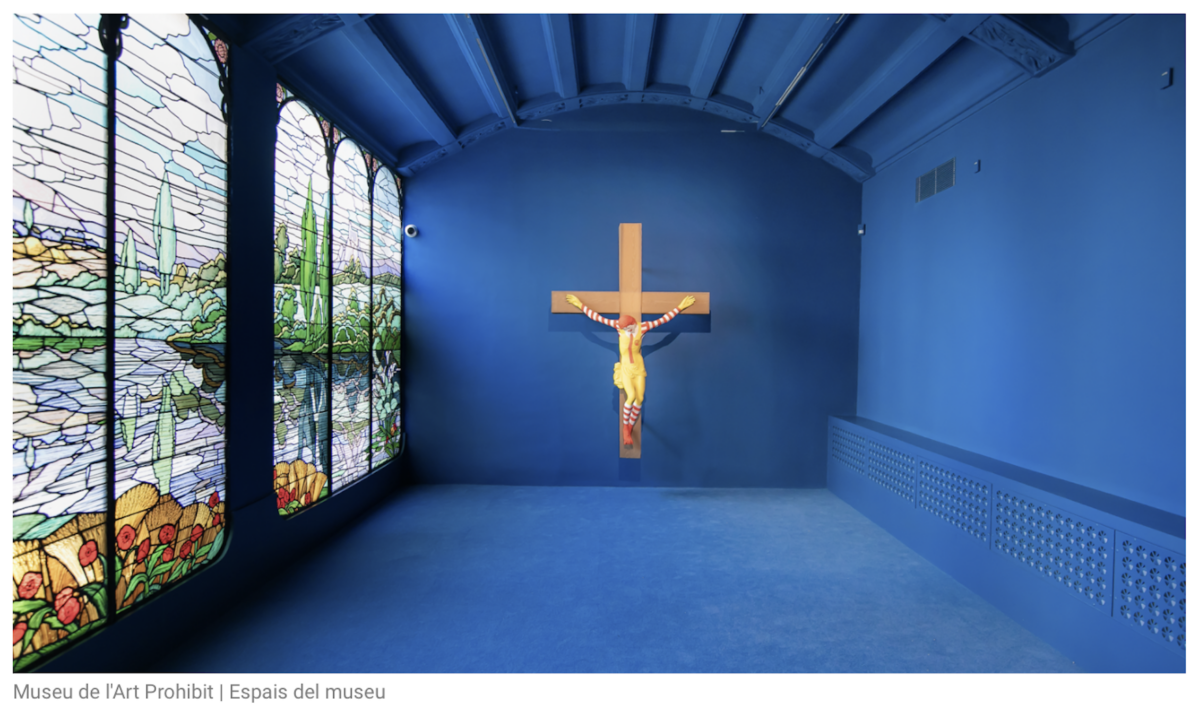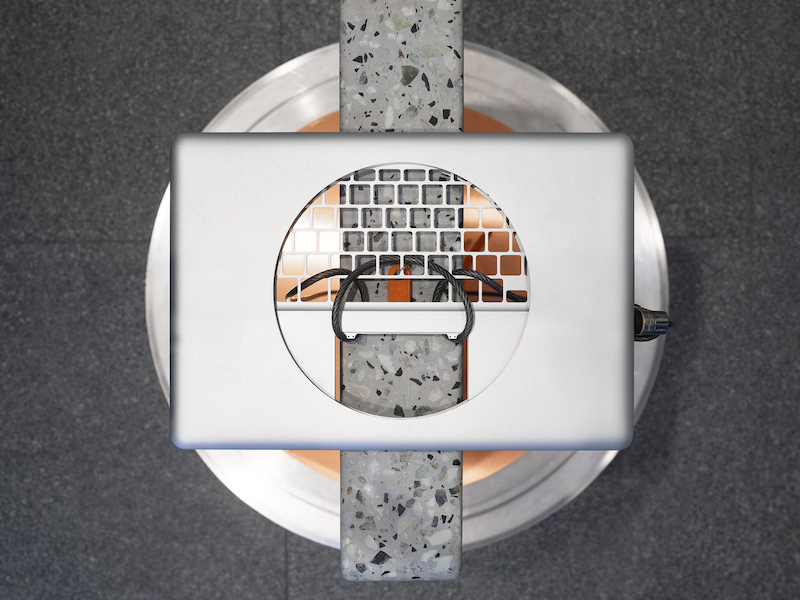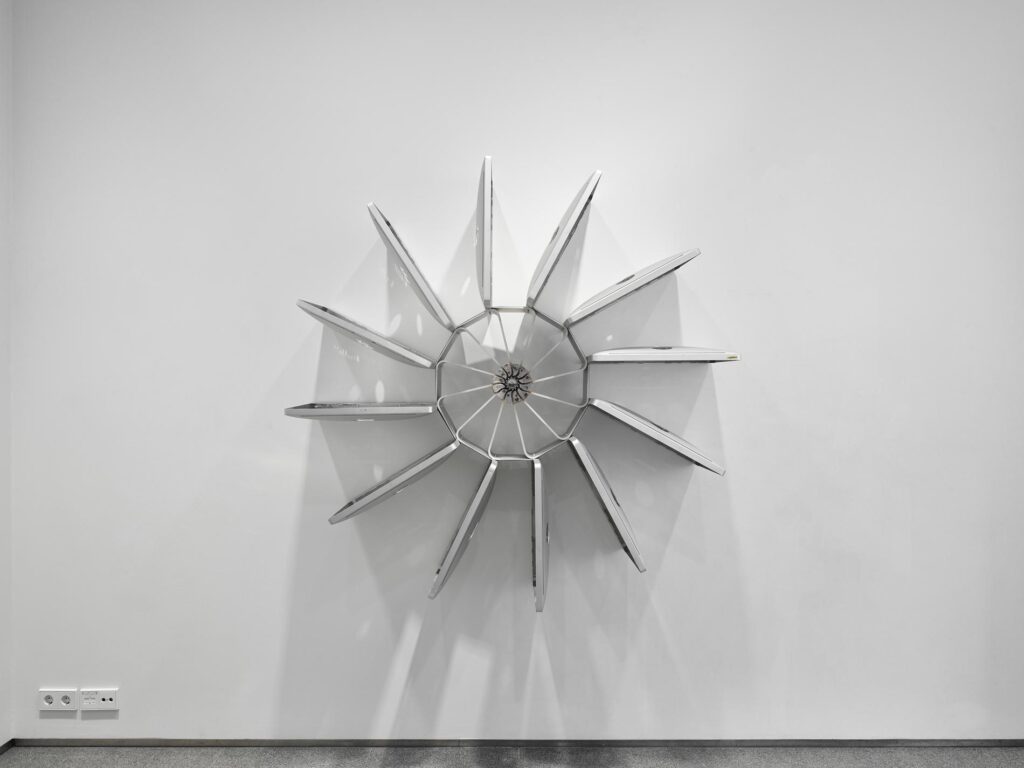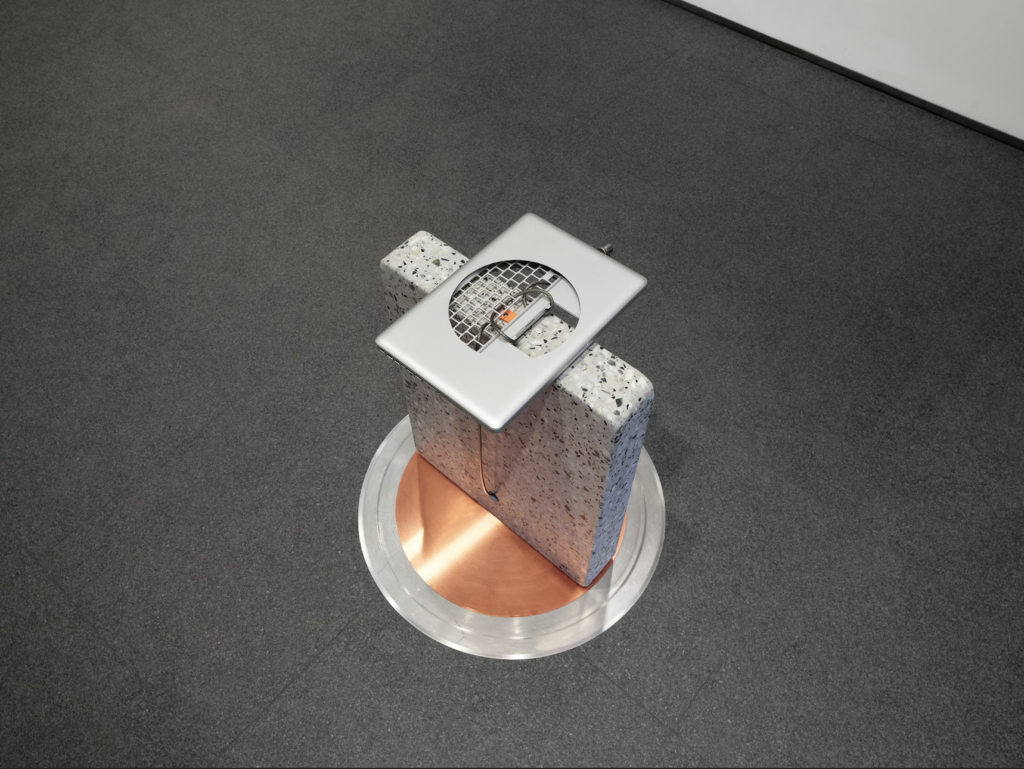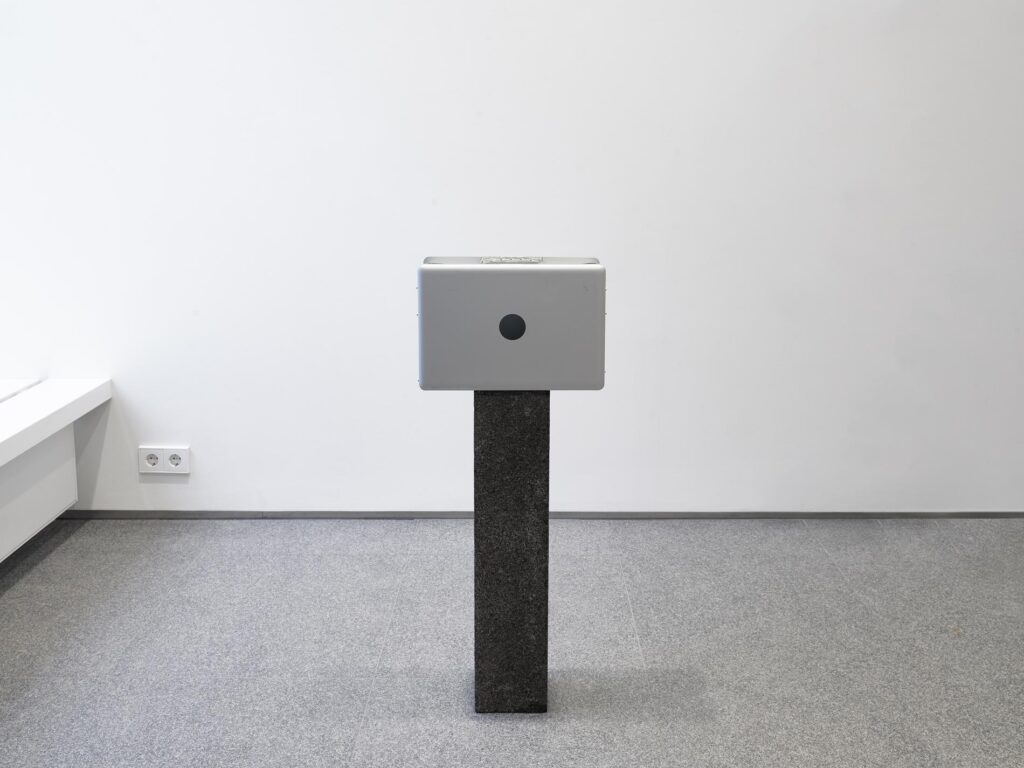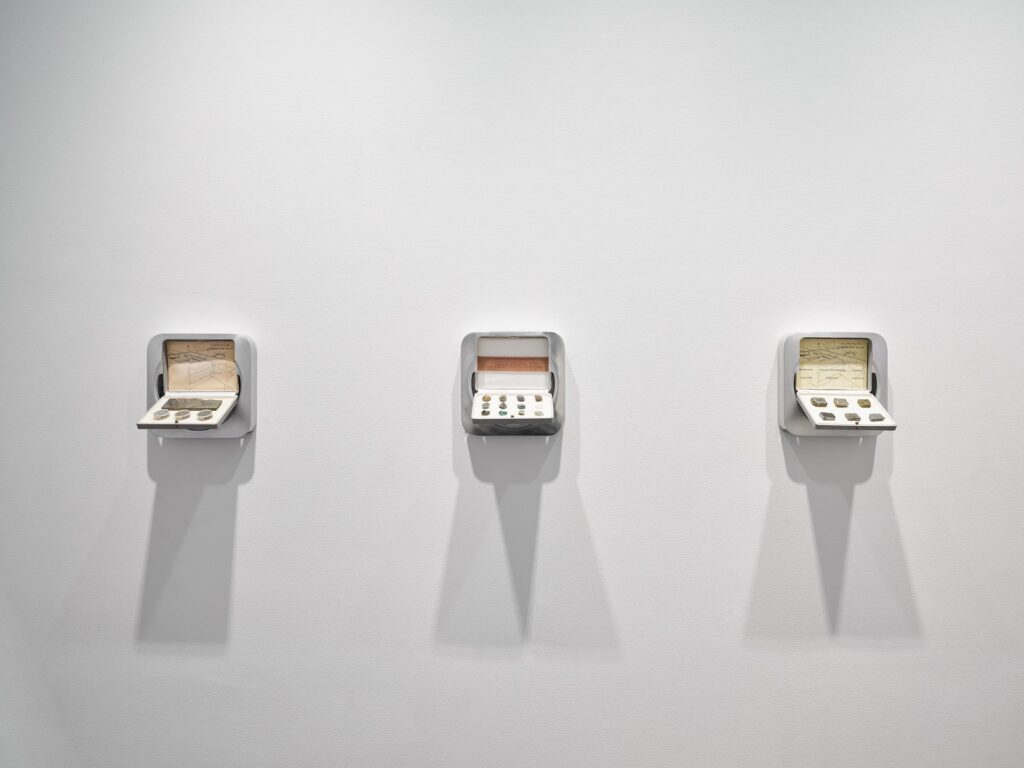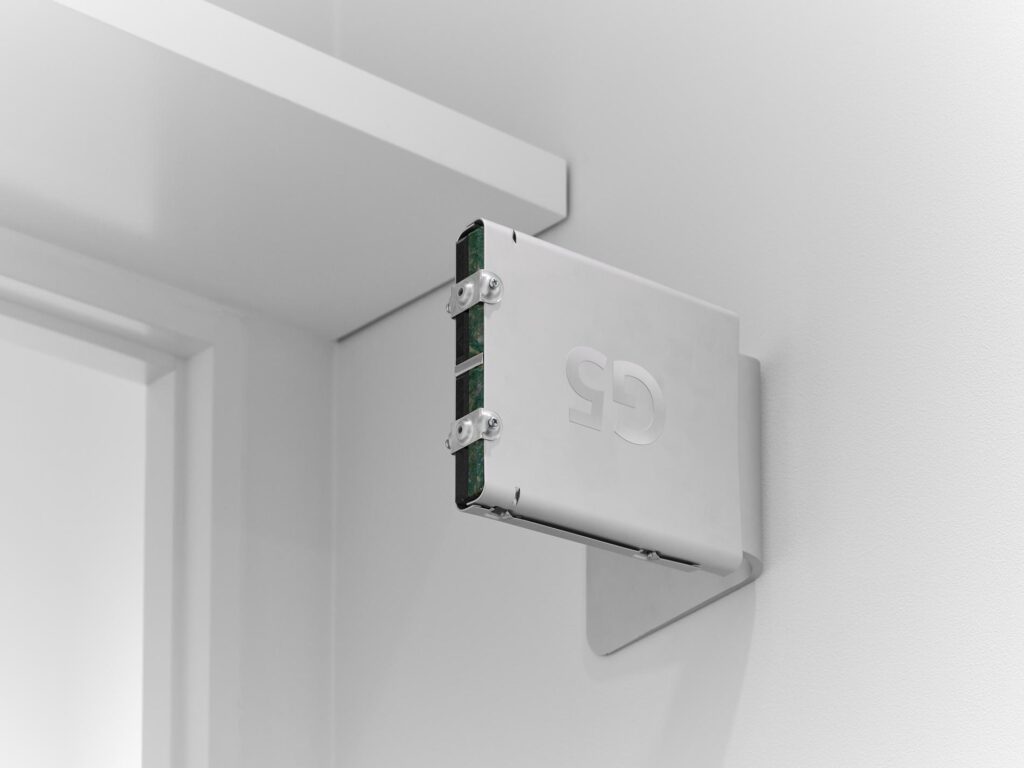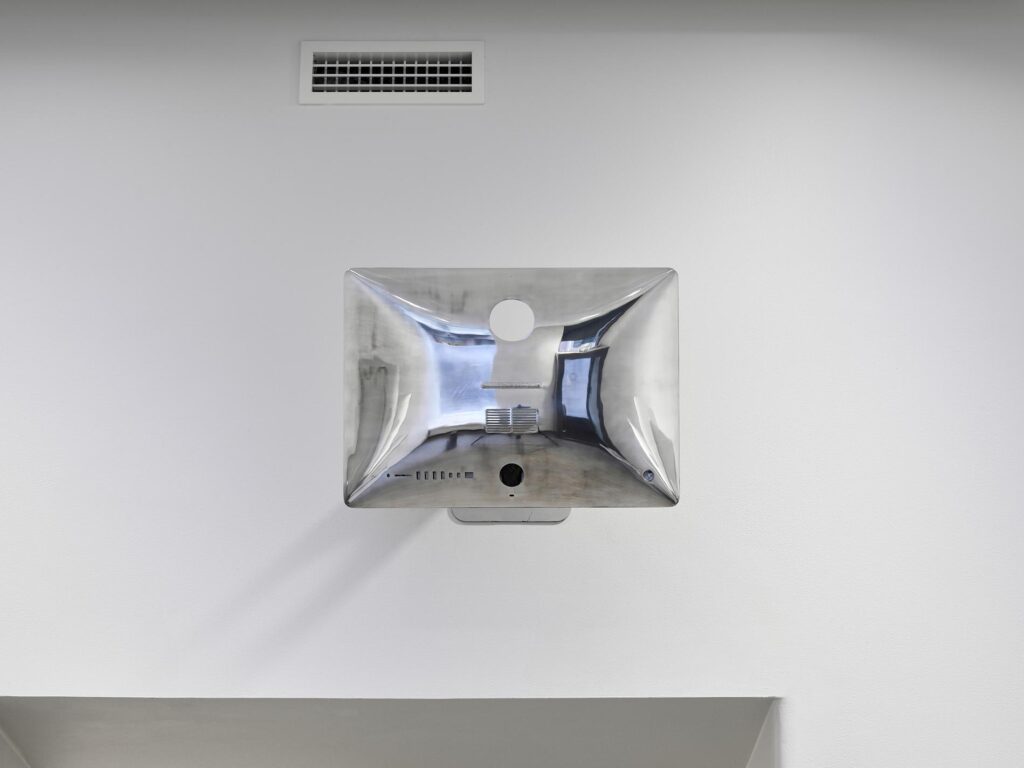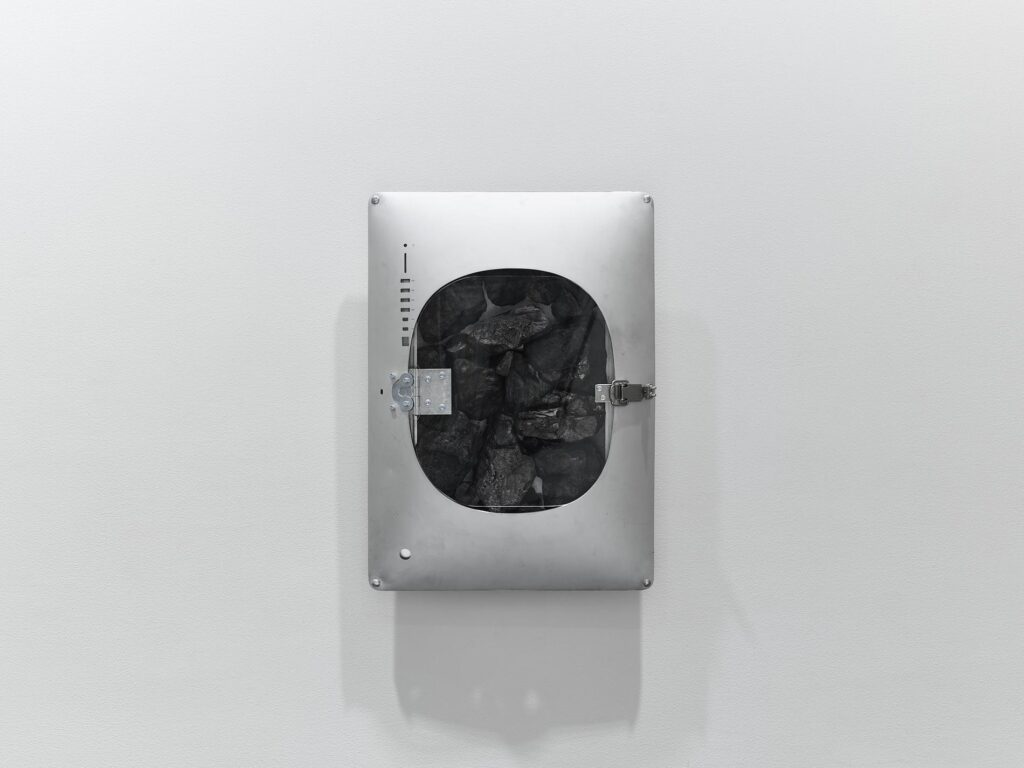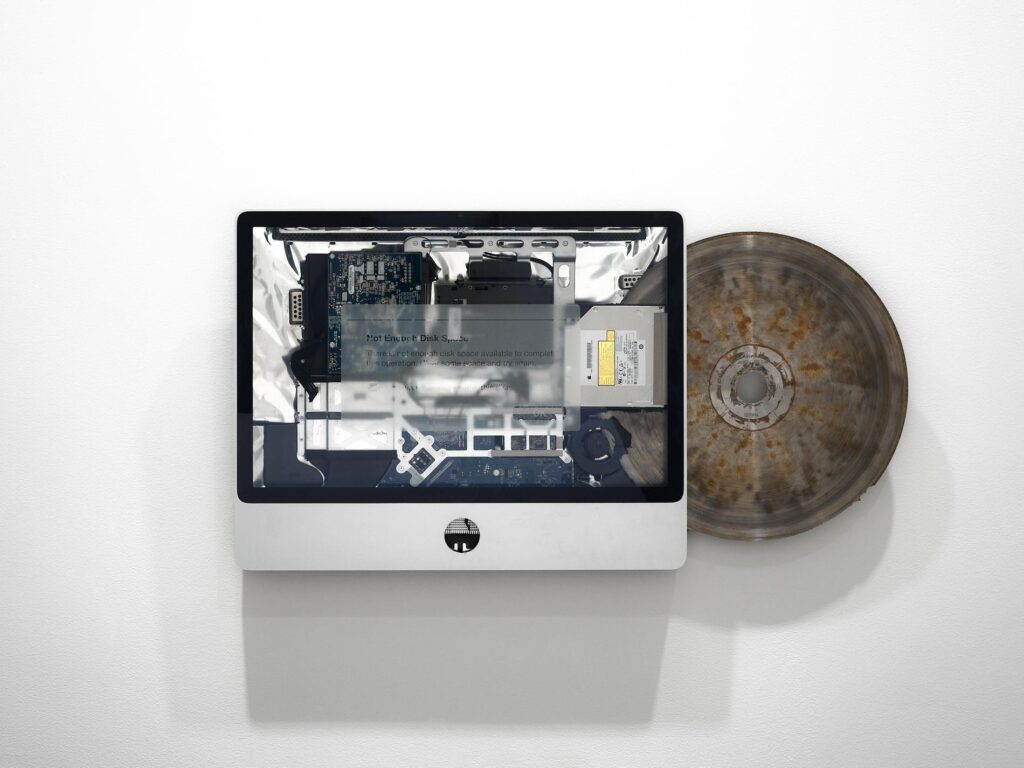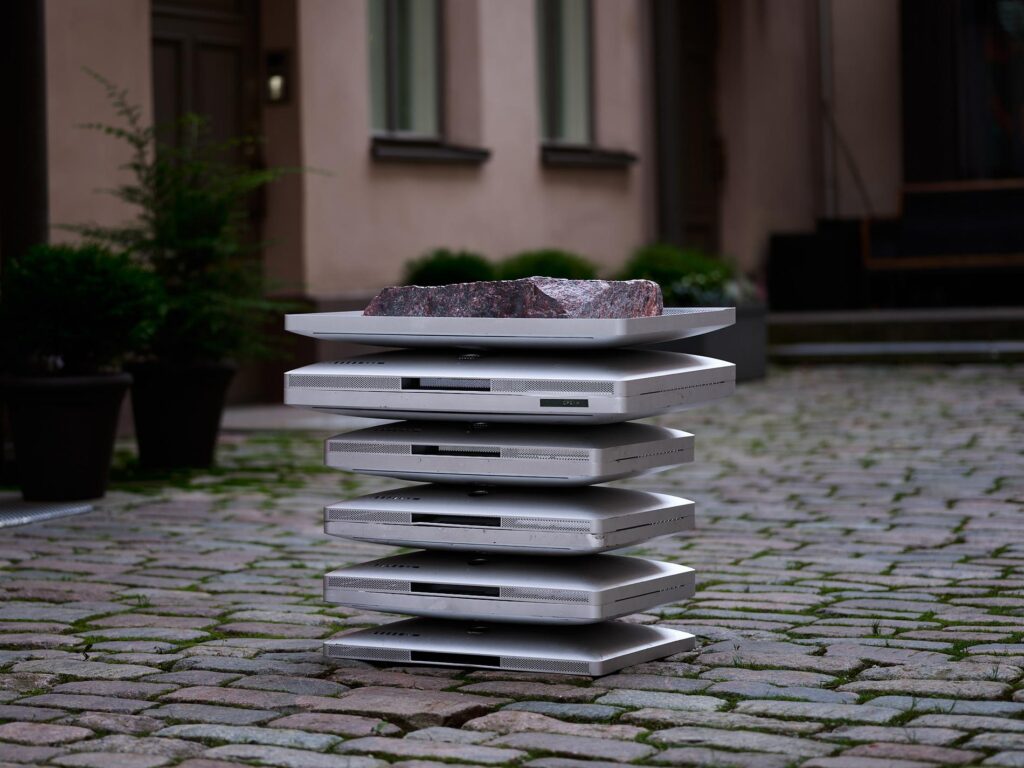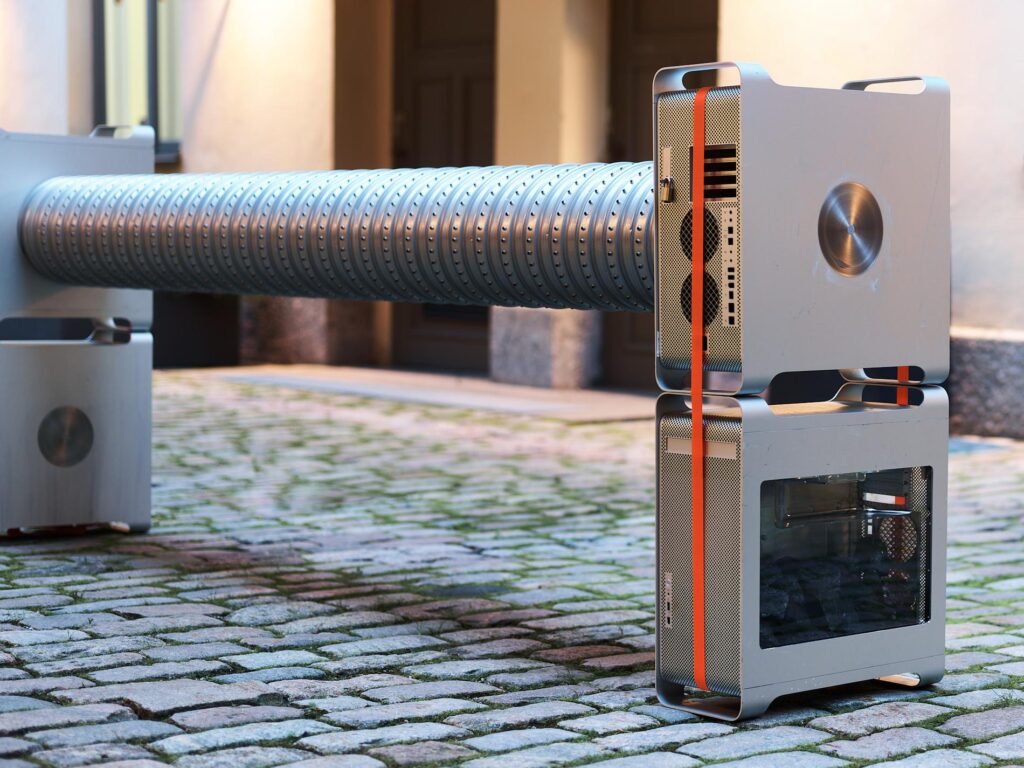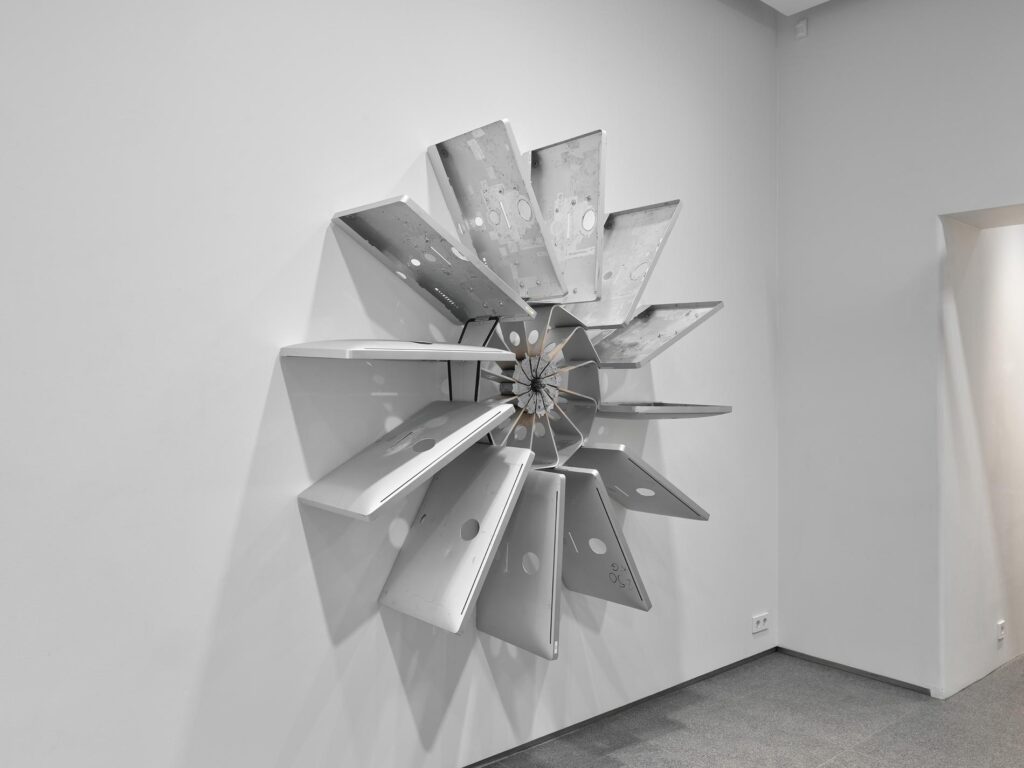Text by Dr. Aura Seikkula
Heraclius famously viewed the world as constantly in flux, always becoming but never being. His concept of metamorphosis is captured in his assertion that “everything flows” (πάντα ρει), reflecting his belief that change is the essence of existence and stability merely an illusion, emphasizing the relentless and fundamental nature of transformation in the fabric of reality.
At Zetterberg Gallery Metamorphose with works by Riikka Hyvönen, Mari Keto, Jani Leinonen, Erwin Laiho & Sampsa showcases how change and transformation are integral not only to understanding reality, identity, and existence but the needed for any contemporary society.
Entering the gallery a sculptural work, Cracking the Colours of Tradition (2024), by Riikka Hyvönen distinctively draws the lines of a vase. Hyvönen engages in a critical exploration of beauty through her expressive and thought-provoking examination of contemporary identity and its multifaceted representations. Historically, the vase has been metaphorically linked to femininity due to its form and function. The vase’s curvaceous shape and nurturing capacity evoke the female body, symbolizing both traditional ideals of feminine beauty and fragility, and the duality of femininity as a vessel for potential and a symbol of societal constraints. By doing so, Hyvönen challenges prevailing female stereotypes and cultural assumptions surrounding femininity, prompting a reevaluation of how these constructs are both perceived and perpetuated in society.
Erwin Laiho’s sculptures connect individuals to the vast economies and natural minerals behind modern technology, revealing the essence of digital devices. By disrupting familiar technologies, Laiho highlights the transient nature of our relationship with them and the deep geological origins of their materials. At the exhibition, Laiho presents 0 (Not Black Rock City) (2024) artwork embodying themes of technological decay, the fragility of modern civilization, and the dystopian future where once-advanced technology lies broken and repurposed. The shattered screens and deconstructed tech components convey the collapse of society’s digital age, while nanodiamonds in security nuts add a layer of lost opulence, now rendered useless, emphasizing the futility of past luxuries in a post-apocalyptic scenario.
The gallery space is dominated by Sampsa’s Kronos (2023). Sampsa is renowned for his politically charged art and active involvement in citizen initiatives. His work engages with social and political issues through provocative imagery and civic involvement, exemplifying a broader trend of artistic activism influencing the socio-political landscapes.
At Metamorphose, Sampsa draws contemporary relevance for the mythology of Cronos, the embodiment of time, through its profound thematic resonance with contemporary concerns. Sampsa’s reading of Cronos reflects societal anxieties about temporal pressures and endless productivity. Cronos’ mythological act of devouring his children symbolizes generational conflict and succession issues, echoing contemporary debates on intergenerational power dynamics and authority transfer. His tyrannical reign and eventual overthrow by Zeus also mirror ongoing discussions about dominance, control, and social revolution. In his seething work Sampsa merges the dynamic between processed food and popular culture within nationalism perpetuating broader socio-economic and homogenized cultural narratives while reinforcing nationalistic sentiments. Concurrently, this phenomenon contributes to globalized food production systems that marginalize traditional nutrients and undermine local food sovereignty.
Drawing upon cultural histories and pop culture, Mari Keto’s work critically explores the complex interplay between value and consumption. In the exhibition a pair of deer horns frame the hallway entrance creating a rite of passage proving one’s prowess. Deer horns, displayed as trophies, symbolize human dominance over nature, commemorate the hunter’s skill and status, and function as a visual representation of masculinity, power, and control over wildlife across various cultures, reinforcing social identity and values related to hunting heritage. Keto’s nuanced approach critiques contemporary society’s valuation practices, revealing tensions between material consumption and cultural significance, while challenging modern consumerism to prompt deeper consideration of the forces shaping our perceptions of worth.
Jani Leinonen, recognized for his provocative and playful critiques of capitalism and contemporary consumerism, challenges viewers to reevaluate contemporary perspectives by harnessing saturated elements of modern society, such as popular culture and corporate branding, to subvert and critique consumerist norms, dynamically transforming everyday economic and marketing phenomena into incisive satire. With The King (2024) Leinonen visualizes metaphoric statements, like “When the Ox enters the Palace he doesn’t become a King but the Palace becomes a Barn“. Instead of being elevated by their surroundings, the individual may transform those surroundings to reflect their own nature. In this case, the ox, denoting someone with limited refinement or sense, does not gain nobility or grandeur by entering the palace; rather, the palace itself is reduced to a barn, a reflection of the ox’s inherent qualities. Leinonen clearly critiques the assumption that mere exposure to prestige or luxury could fundamentally alter one’s nature, highlighting the persistence of intrinsic characteristics over superficial changes in environment.
